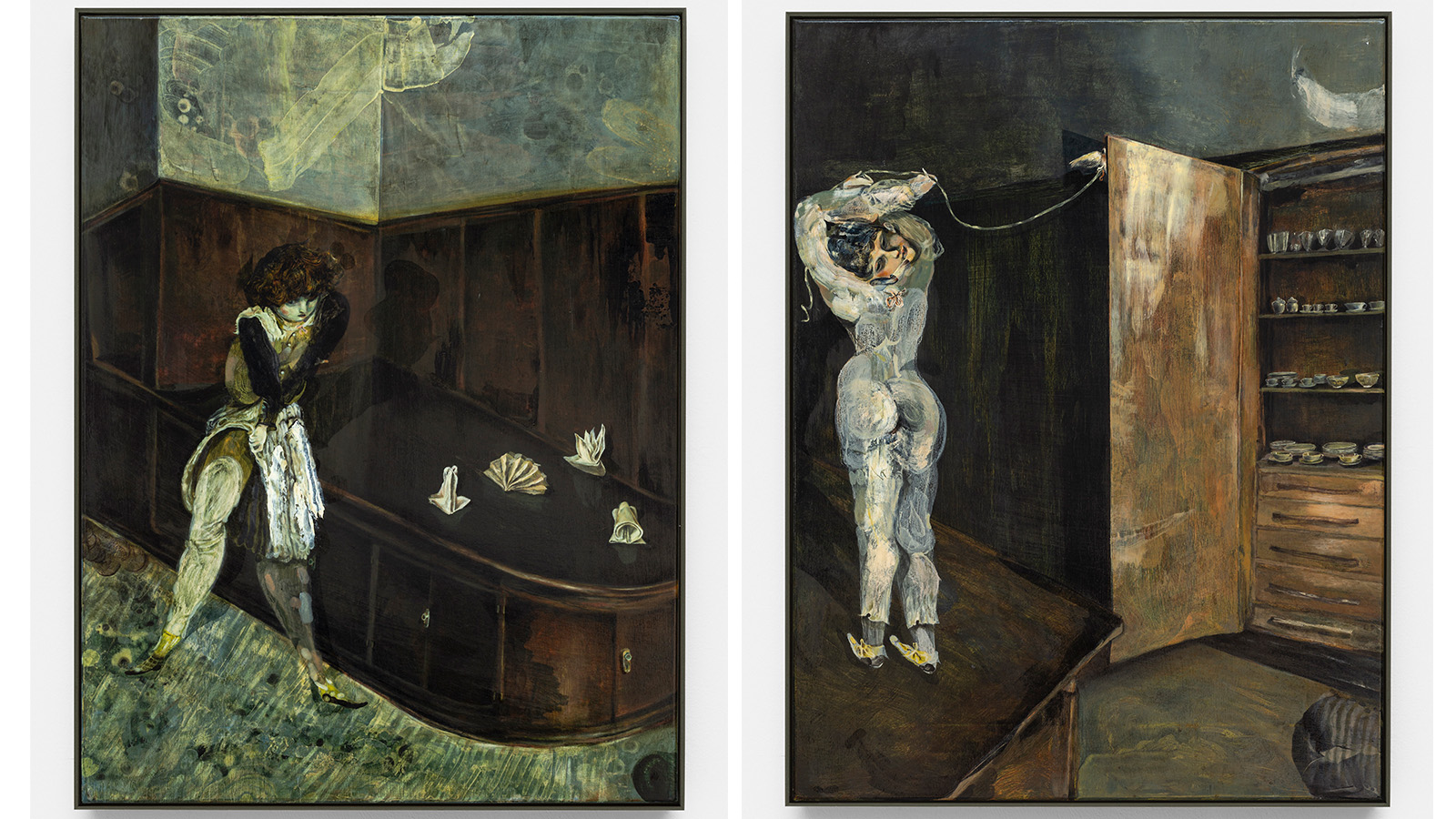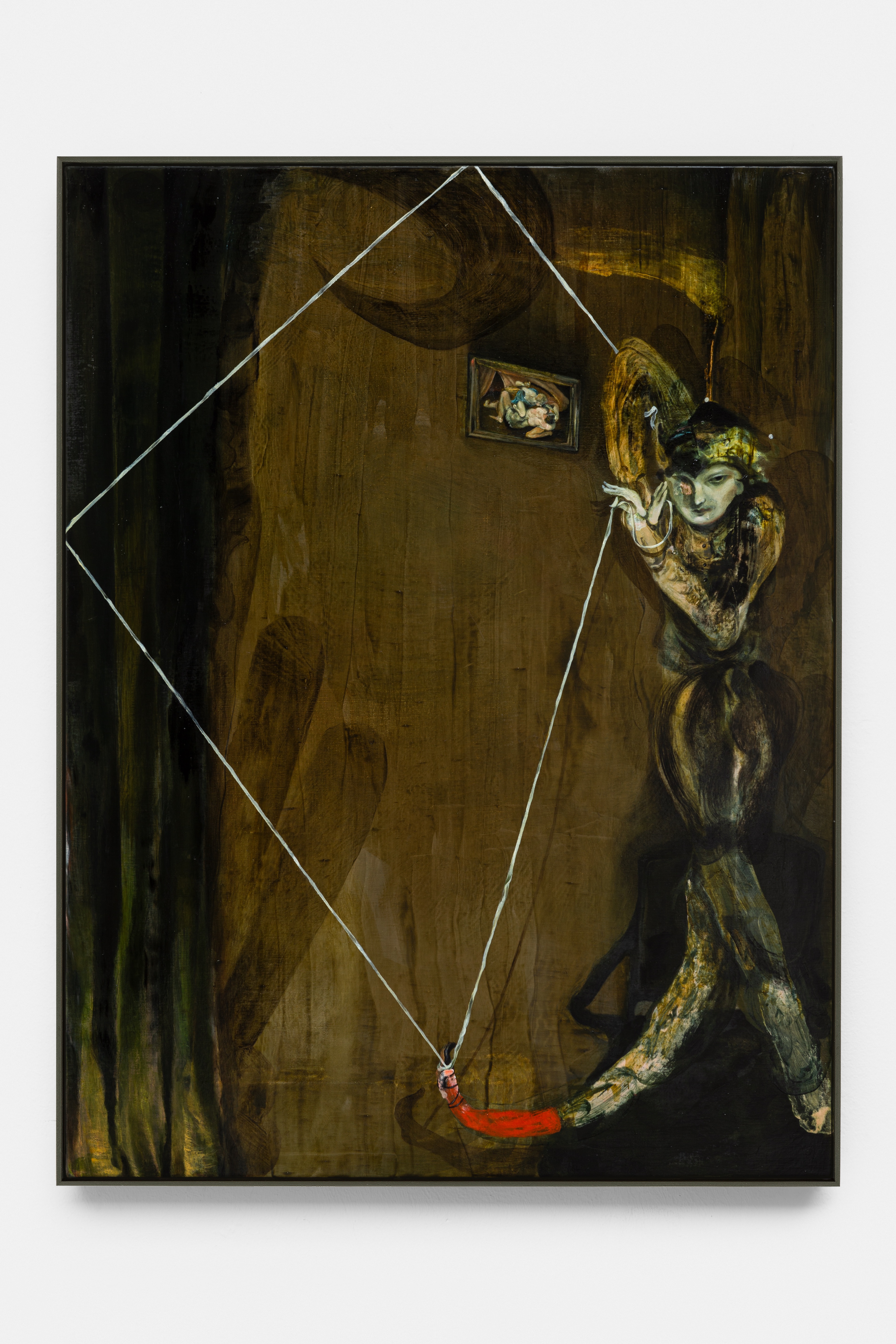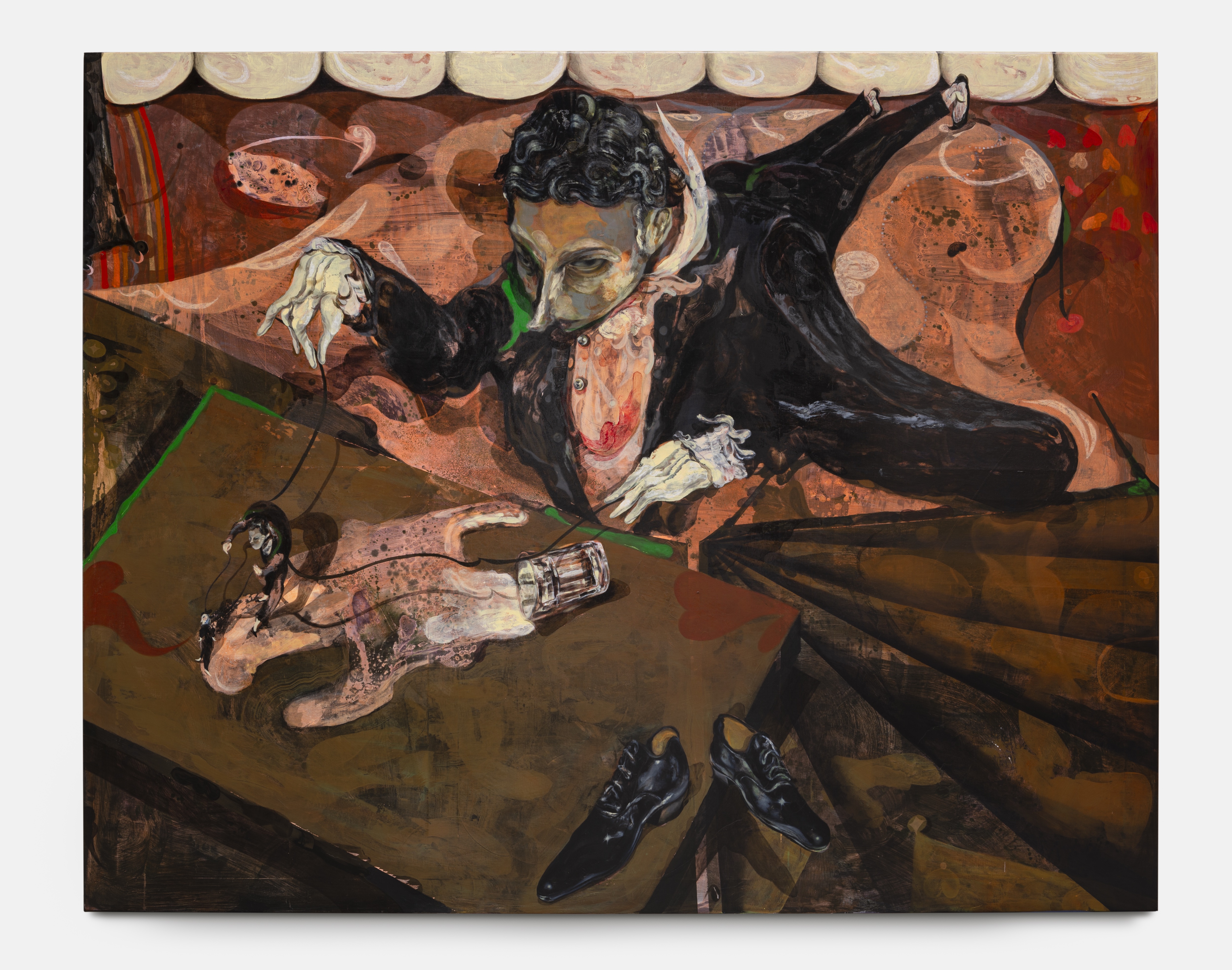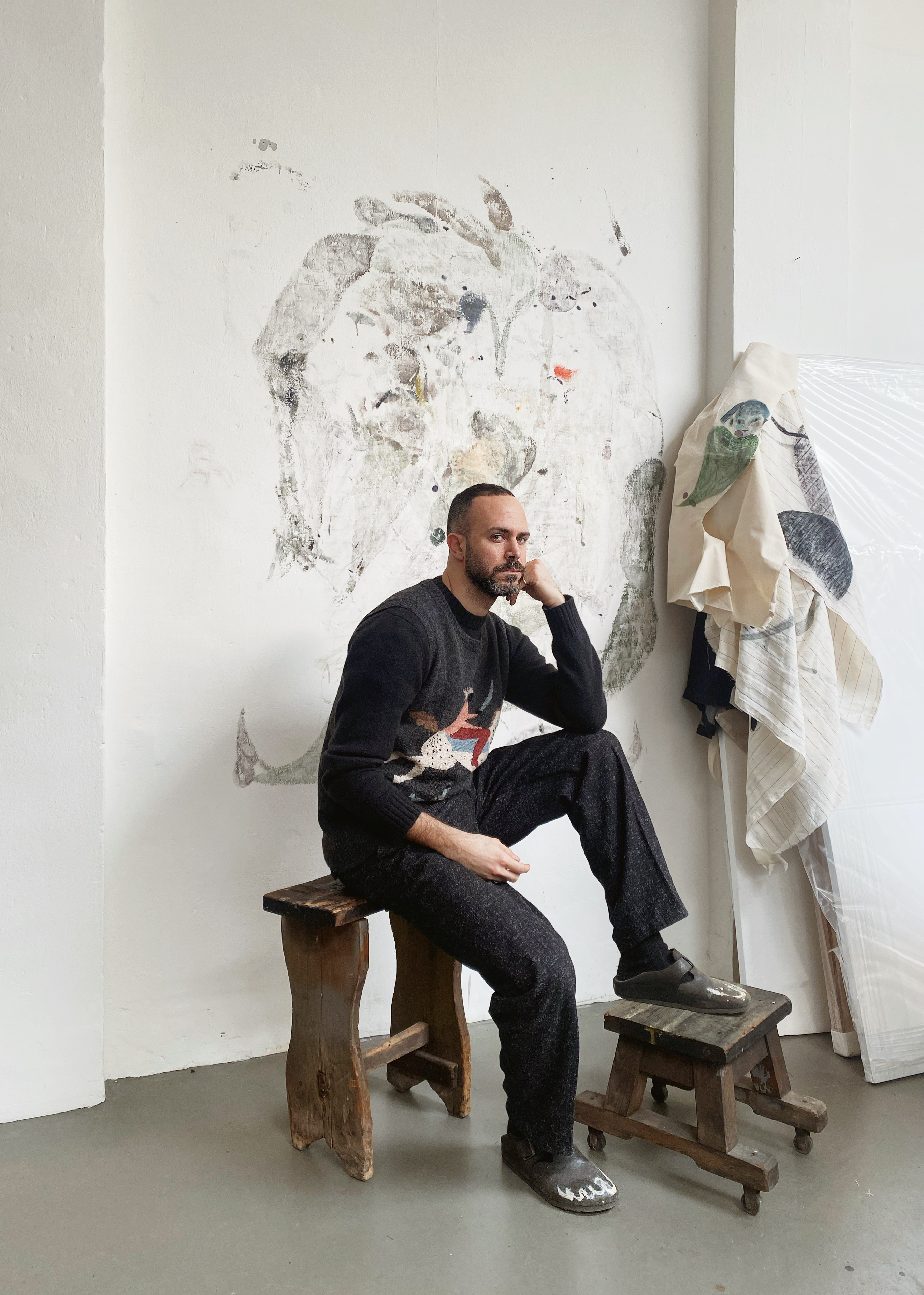
'I approach the canvas as if it were a stage, or a scene,' artist Guglielmo Castelli explains during our Zoom conversation from his studio in Turin. Speaking at the beginning of March 2024, he tells me that he has just finished the paintings for his Venice exhibition ‘Improving Songs for Anxious Children’, curated by Milovan Farronato at the Palazzetto Tito, and opening to coincide with the Venice Biennale 2024.
Bringing together a series of paintings, maquettes, textiles and knitted sculptures, the show explores childhood as the genesis of discovery – of the body, of relationships, of death and of the dance between success and failure. Inside Castelli’s canvases, figures bend and contort in ways that defy anatomy, and are set against familiar domestic backdrops. The works portray a metaphysical realm, one that explores ideas of fragility and violence, carelessness and attentiveness, and morality and corruption.
Guglielmo Castelli’s 'Improving Songs for Anxious Children'

'The idea of fragility, in terms of the other side of violence, is like a knife that you cut and open within yourself…' Evoking a sense of inner turmoil and fragmentation, Castelli’s works are as much inhabited as they are inhabiting: some works incorporate collaged items of clothing, hinting at a past presence. In Of aggression and possession, a paper cut-out house is collaged to cover the crotch of an empty pair of shorts, with figures climbing inside and up the legs. The clothing, while contingent, evokes a sense of a hollowed corporeality. Marcel Duchamp's term infra-mince (defined as traces of previous existence) is useful here, prompting viewers to contemplate beyond its surface, beyond fragile boundaries.

In the studio, Castell is interested in ‘recalculating the route’ in his artistic process. At the age of 15, he began illustrating children's books and later turned to fashion illustration for Vogue Italia, but he remained consistent in contemplating the ‘relationship between the world that can create the image and the world that can create the imaginary’. The title for the show, Improving Songs for Anxious Children, is as much a cry for help as it is a call for optimism, aiming to counter today's rapid online consumption culture, redirecting attention towards the nurturing and development of the younger generation.

The act of painting itself is almost a performance, whereby Castelli choreographs the scenes inside the framed canvas: ‘Every time I try to paint onto a canvas on the wall, it produces terrible results. I need to have everything fixed inside the frame before I paint…’ The distorted perspectives and warped spatial relationships further contribute to a feeling of dislocation, as if the viewer has entered into a dreamlike realm where logic and reason are suspended. In The minimum labyrinth, a figure with a sharp gaze casts a white frame, of the perspective sort, enshrining the canvas space; within the painting a smaller painting is depicted, of figures laying on the ground. In this realm of suspension, Castelli orchestrates vivid yet minute psychodramas, imbuing his paintings with our unfiltered internal worlds.

Castelli allows the viewer into his intimate scenes, beyond the frayed and indeterminate edges, involving us in the very fabric of his past. The viewer goes beyond a dialogue with the artwork: an introspective dialogue has begun.
Guglielmo Castelli’s ‘Improving Songs for Anxious Children’ is at Palazzetto Tito, Venice, 15 April – 7 Jul 2024, labiennale.org







